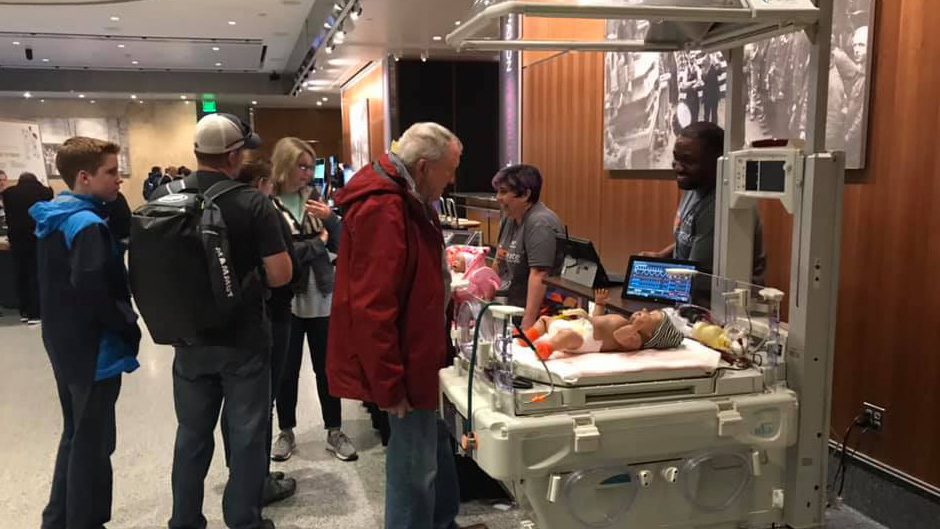The School of Nursing and Health Studies (SONHS) presented the installation “Hands-On Simulation Education to Combat Nursing Shortage, Infant Mortality” at the Smithsonian Institution as part of the ACCelerate Creativity and Innovation Festival.
For the second time in two years, the free, family-friendly festival organized by Virginia Tech highlighted another stellar dimension of 15 universities, including the University of Miami, that belong to the Atlantic Coast Conference—the NCAA powerhouse known for winning dozens of national championships in multiple sports.
“This festival is a great opportunity to showcase UM’s outstanding research, scholarly, and creative works among our ACC peers and to the public,” said Jeffrey Duerk, UM’s senior vice president for academic affairs and provost. For three days in April, over 50,000 visitors explored 38 interactive installations and 13 performances showcasing creativity and research at the nexus of science, engineering, arts, and design at ACC institutions.
The SONHS project was one of just three exhibitions chosen to represent UM, and it required transporting and setting up a full-size incubator in the west wing of the Smithsonian’s National Museum of American History.
“Our goal is to show how we’re preparing nurses, who are the most trusted professionals,” said Dr. Susana Barroso, assistant professor of clinical and director of special projects at the school’s Simulation Hospital. “It’s also a great way to network with other universities—our ACC partners—to be able to say, ‘Look what we’re doing. Look what you’re doing. Let’s join forces and create something even better.’’’
Joined by nurse specialist Michelle Arrojo, DNP ’18, and simulation technician Curtis Francisque, Barroso demonstrated how nursing students learn to care for premature babies and other newborns with serious health challenges by practicing on life-like infant simulators that can stop breathing, change color (become cyanotic), and exhibit rapidly dropping heart rates and other life-threatening symptoms. The curriculum primes students to work collaboratively, use critical thinking, and intervene appropriately to provide safe and evidence-based care in a NICU/PICU environment.
The demonstration was particularly relevant with preterm births—the number one cause of death among babies—on the rise in the United States. Because these fragile patients require highly skilled care, undergraduate students rarely get to interact with them directly. Infant simulators like the one Barroso and her team displayed in D.C. help span the gap from education to experience safely and realistically.
The School of Nursing and Health Studies also represented UM at the eMerge Americas tech event for the second year in a row. Watch the video: https://bit.ly/2JPd0am.

